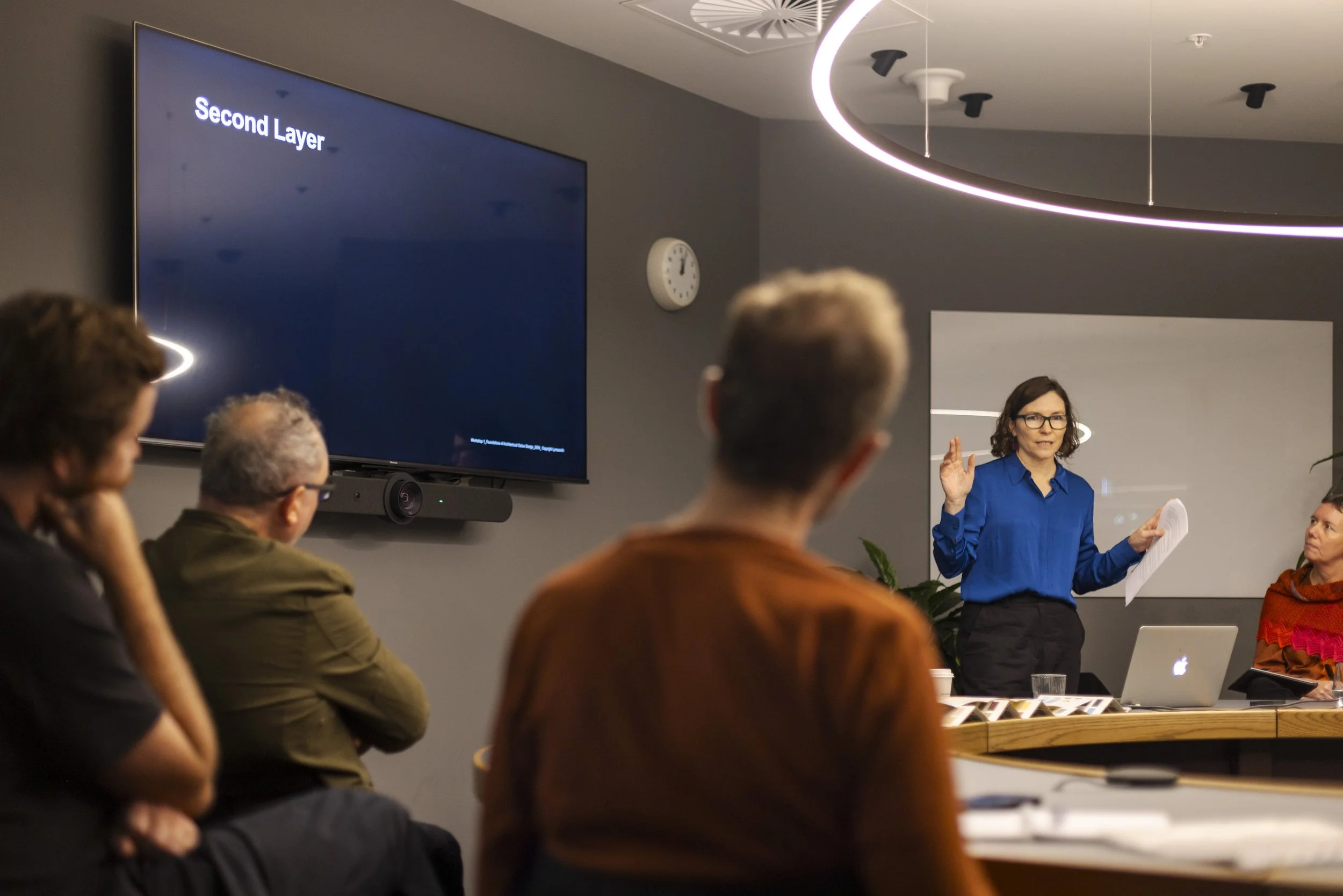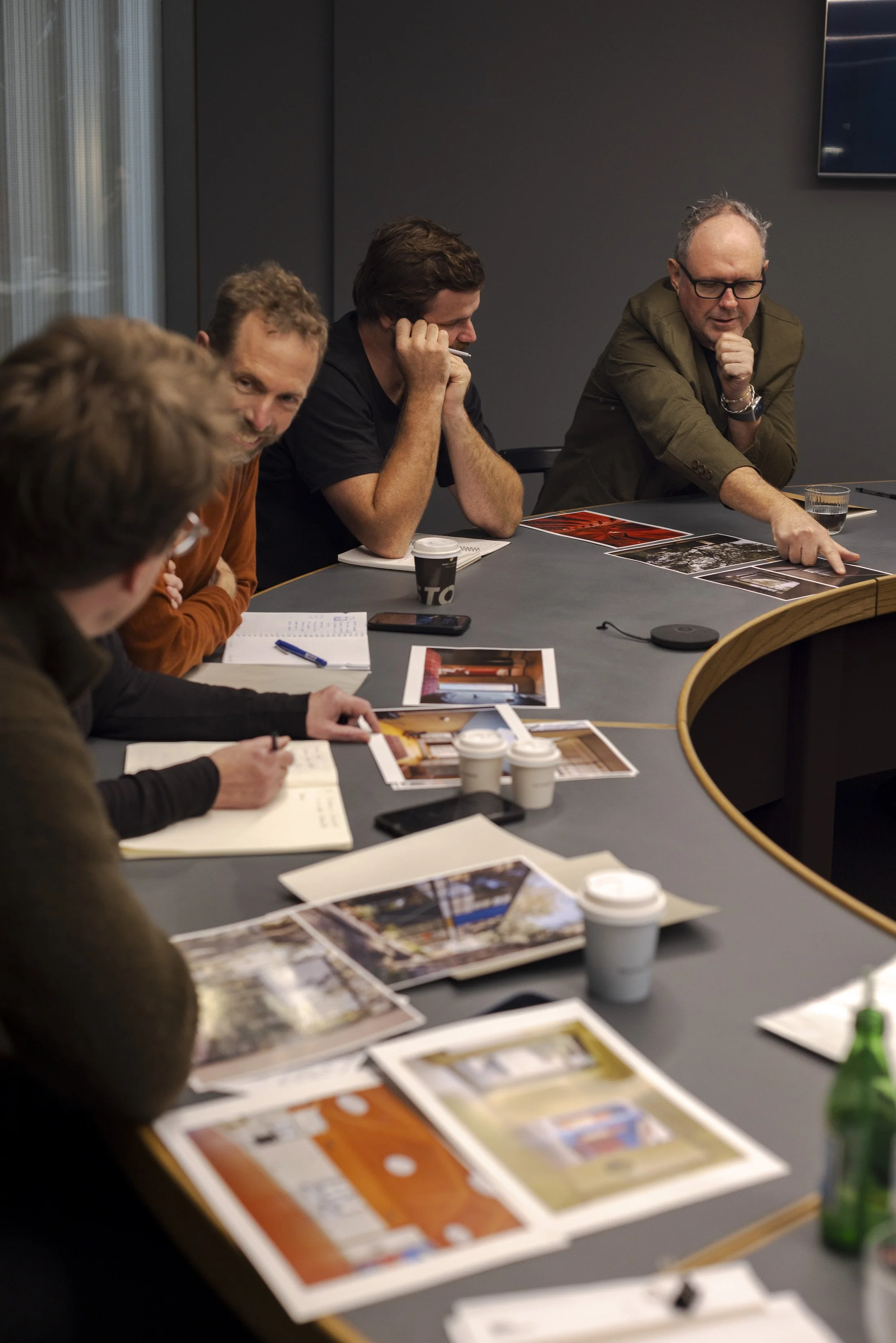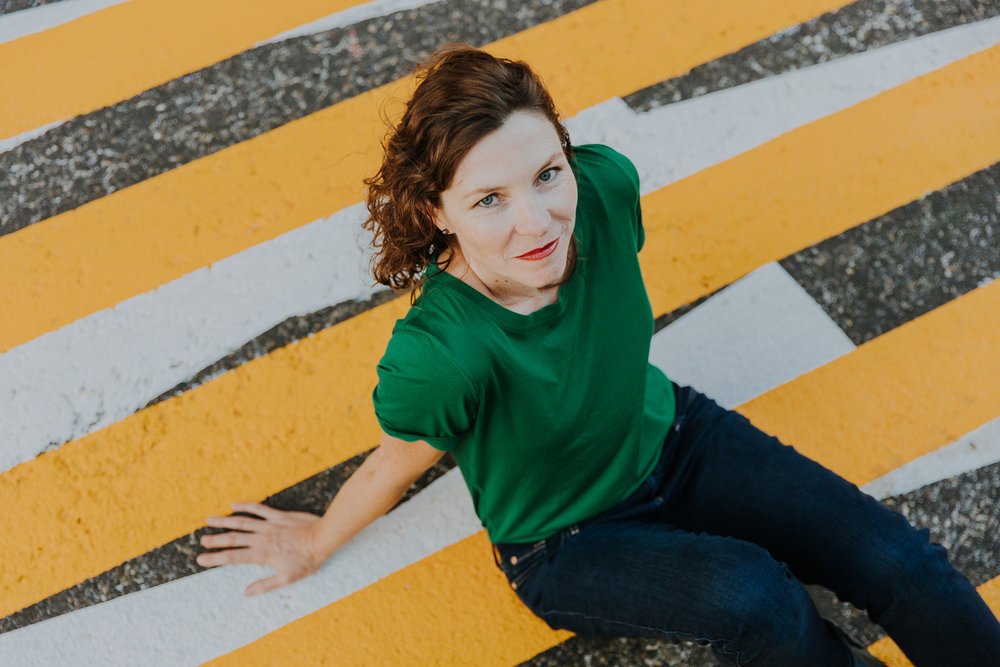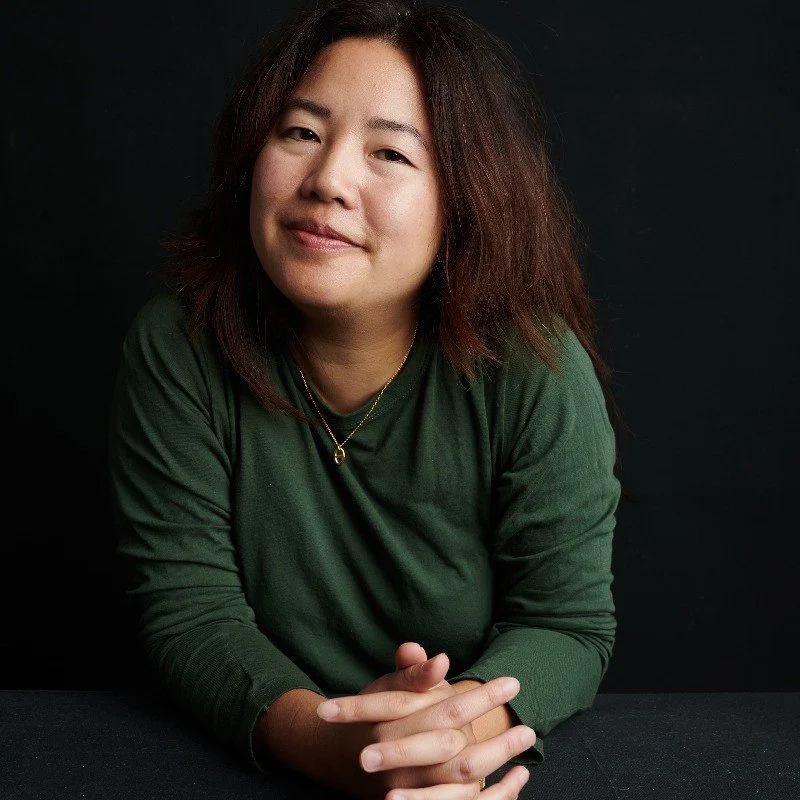
In-House Colour Workshops for Spatial Designers
Transform your studio’s approach to colour.
Delivered inside your studio, Lymesmith workshops bring evidence-based colour theory, practical tools, and real-world application into your studio, helping architects and designers to use colour with confidence and impact.
White is not right
Don’t get me wrong, white is quite useful for reflecting light around a room, but that doesn’t mean that white surfaces are the best or the only option if you want a light space.
In fact, unless you are designing a laboratory, I would venture to say that bright white is NEVER the best option since generally speaking in Australia, we do not suffer from a lack of light.
Our brains have evolved to thrive in complex visual environments and to see patterns and make sense of millions of colours in an instant. Too much exposure to bland and monotonous surfaces will cause a rise in cortisol and produce anxiety in humans. Too much bright white space can also contribute to eye strain by causing our pupils to contract when they actually need to be open for close or detailed work.
My workshops teach the colour design foundations every architect and spatial designer needs to know.
I don’t teach colour psychology, or the history of the colour wheel, which any decent book on colour can offer you.
I teach you about the application of colour for real world, large scale, complex built environments. I teach Architectural Colour Design.
What is Architectural Colour Design?
I define good colour design as ‘colour selection and arrangement that is in service to the architecture, and to the people who will use the architecture’.
While most people have colours they love and those they’d prefer to avoid - good spatial colour design is not about individual colours at all. It’s about relationships between the colours, and the strategies used to determine the placement of those colours.
Good colour design may be very understated, hardly registering as ‘coloured’ at all. Conversely, colour may be a building’s most dominant and memorable characteristic, or it can be anywhere in between these two extremes.
Good Colour Design
Intelligent colour design is the artful combination of colour selection, colour strategy and architectural style.
Intelligent colour design;
makes buildings better for people
creates engaging, place-sensitive environments for human well-being and user engagement
connects interiors to landscapes
is about colour relationships not individual colours
is Architectural Colour Design.
Intelligent Colour Design
Learn Architectural Colour Design with Lymesmith
If you’re ready to transform your thinking about colour in architecture and embrace colour design for human well-being, I’m currently offering two distinct workshops for your teams
Workshop 1:
Foundations of Architectural Colour Design
Learn the essential language, techniques and theory for applying good colour design to your built environment projects.
This course covers:
Colour theory for architects
Loosening your death grip on vivid white
The key colour strategies every architect needs
What is colour appropriate to architecture?
Colour conversations with clients
Includes colour collateral, PDF handouts and a reading list of key colour texts for architecture.
Duration: 3.5 hours
Max participants: 14
Credit: 3 CPD Points
Workshop 2:
Introduction to Place-Based Colour Design
Learn to work with site and context to develop uniquely resonant colour palettes for every project.
This course covers:
An overview of key Lymesmith projects
In-depth case study of my place-based colour process
A hands-on session designing a colour palette and experimenting with colours on a 3-dimensional space.
Includes fan decks, samples, trace and coloured pencils.
Duration: 3.5 hours
Max participants: 14
Credit: 3 CPD Points
Bring Architectural Colour Design into Your Practice
Colour is not an afterthought. It is an architectural material that shapes atmosphere, experience, and human well-being.
If you’re ready to expand your team’s capabilities and bring intentional colour design into your design process, these workshops are the best way to start.
Whether your team needs a clear, practical foundation or wants to explore deeper place-based approaches, both workshops are designed to meet your teams where they’re at.
EMILY’S TESTIMONIAL
The first Lymesmith Colour Workshop was held in Tasmania - here’s what Emily Taylor of Core Collective Architects had to say about it.
10 reasons architects need Lymesmith’s colour design training
1. Colour cannot be avoided. Every decision made when specifying materials is a decision about colour.
2. Learning to see ‘colour as material’ will unlock new potential in your design practice.
3. Understanding how your colour strategy is crucial, as your colour palette will transform your practice.
4. User experience is key to every building’s success. Colour fundamentally affects the user experience.
5. Sensitive colour design is crucial in both trauma informed design and biophilic design.
6. Intelligent colour design creates better buildings for human beings.
7. Colour offers low budget, high impact transformations of existing buildings. Can you afford to ignore it?
8. Colour is complex, challenging, changeable. You have to understand how to make it work for you.
9. Learning how to communicate your colour concepts effectively is part of every Lymesmith course.
10. Only 16% of architects are happy with their level of colour design knowledge. Chances are you are one of the 84% who want to know more!
These courses are for you if…
You know that colour has a huge impact on architecture, but you don’t know where to start.
You defer talking to your clients about colour in the early stages, but then it’s left too late and opportunities are missed.
You have two ‘go to’ paint colours you use for all your projects (and yep, you basically mean black and white!)
You’ve tried experimenting with colour but the results fell short of your expectations..
You think of colour as a surface decoration rather than as a tool that can fundamentally change the way a space is perceived.
You can put a decent colour palette together but you don’t have a clear strategy for applying it to different building types.
You want to be inspired to explore new ways of thinking about and using colour in your design practice.
You are interested in Lymesmith’s colour design philosophy and want to learn more.
You’re an architect or other spatial designer and you can relate to any of the above!
This is not for…
Finding out about the latest colour trends. Lymesmith’s philosophy of Place-Based Colour Design is the antithesis of trend-driven colour design.
Learning one simple colour formula that will solve all your problems. Colour is complex.
Sitting back in silence. You will be exchanging ideas about colour with the whole class. Why? Improving your ability to communicate colour ideas with your clients and colleagues is key to you getting maximum value from the course content.
The general public or home owners. This is a course specifically for practising spatial design professionals such as architects, interior designers, landscape architects, environmental designers, set designers, etc.
About me,
sonia van de haar
Hello, I’m Sonia!
I am passionate about the potential of intelligent colour design to create a built environment that connects people to place and enhances human well-being.
My qualifications in architecture and fine arts gives me a unique insight into colour design that is attuned to the particular needs and concerns of architects.
I love helping my clients to unlock the potential of colour and material to transform buildings and create memorable places. I work with a cross section of design professionals, from sole practitioners to medium sized firms to developers and private clients, on all scales of projects in the built environment.
In 2023 I began teaching my award-winning colour design methodology to architects and spatial designers.
Bring Intelligent Colour Design Into Your Practice
Book a call with me to discuss how these workshops can strengthen your team’s approach to colour across current and future projects.
SUBSCRIBE to receive the free GUIDE
Discover how Lymesmith's design method naturally leads to better colour communication by outlining the key skills you need to weave a colour story your clients will love.













